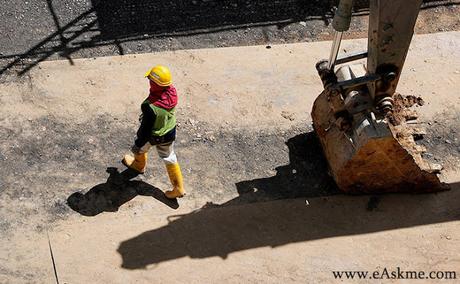Perhaps running a company has always been a dream of yours. After years of hardship and perseverance, you finally made it happen. You turned your dream into reality. Of course, the last thing you want is for someone from your staff to get injured on the job. If we lived in a perfect world where everything always went according to plan, you wouldn't have to worry about this.

Others are also reading: Personal Information That Your Employer Needs to Know
Unfortunately, any job comes with a certain degree of risk. Even if you work at a desk in an office, you could slip and fall on your way to the coffee machine. And some jobs are inherently more dangerous than others. There's always a chance that someone in your company will have an accident and get injured, and this can have serious consequences for you as their employer.
First of all, if they get hurt they might need to take some time off to recover. The work will still need to get done so it will be shifted on the rest of your staff. They already have their regular workload, so even in ideal conditions it's still likely that you'll notice a decline in productivity. Furthermore, if this is a recurring problem rather than a one-time incident, constantly shifting the workload on other employees and putting them under more pressure will incentivize them to take time off as well, or it might even increase your turnover rate. It's a vicious cycle.
This vicious cycle will also have a detrimental impact on morale because if you don't take measures to increase safety in your company's working environment, your employees might get a sense that you don't care about their well-being and therefore you do not value their contribution. People want to work for companies that appreciate them and where they feel safe. They also don't want to worry about accidents and injuries.
Legally speaking, it's your responsibility as their employer to take the required precautionary measures to protect their health and safety while they are at work. Neglecting this responsibility will result in investigations, government sanctions and litigation. Bear in mind that your employees also have the right to seek compensation for their injuries, both physical and psychological. Lawsuits can be very damaging to your company's reputation so it can become very difficult to attract customers, investors or business partners.
The UK has a set of official health and safety guidelines that any company that employs people must adhere to. A few decades ago, overcrowded factories with completely inadequate safety policies were not uncommon. This, as you would expect, led to many accidents and injuries which is why we needed the regulatory reforms that relegated this "management style" to a bygone era.
That being said, following health and safety guidelines entails more than printing them on paper and handing them out to your staff. A health and safety program cannot be successful without employee engagement. Everyone needs to understand the rules and why it benefits them to follow them.
Slips, Trips and Falls
As we mentioned in the introduction, some types of jobs are inherently more dangerous than others. But slips, trips and falls can happen in any sort of working environment. They're the most common workplace accidents and also the hardest to prevent. A third of workplace injuries result from slips, trips and falls. Injuries typically involve pulled muscles, sprains, injuries to the back, head and neck, cuts and bone fractures.
They're the hardest to prevent because there are so many factors that can cause them such as slippery surfaces, obstructions on the walking paths, loose rugs, wrinkled carpeting, unsecured cables and poor lighting. They're also more likely to happen in working environments where employees are pressured with unrealistic productivity targets that cause them to rush.
To minimize the risk of slips trips and falls you need to regularly perform inspections to check for the causes we enumerated above. It's best to assign someone to check for potential hazards and encourage everyone in your team to report any issues so they can be quickly remedied. You'll also need to provide your employees with safety training so they know what to look out for, what to avoid and how to handle hazards.
Lifting, Handling, or Carrying
Handling large items is another common cause of workplace injuries. We've all been taught to lift with our knees because lifting with your back is dangerous. Despite this, our instinct remains to lift with our backs and we need to be told repeatedly until we finally get used to the proper procedure. This proves that training is necessary.
If your employees often have to lift, handle and carry heavy objects and you know that the proper, safe techniques don't come naturally, you need to make sure that they follow procedures and don't hurt themselves. Remember that if they hurt themselves, it's your responsibility. It's also a good idea, when possible, to purchase equipment that can lift and carry heavy objects so your employees don't have to. It's more efficient and can minimize the risk of injuries, but you also have to make sure that you train your staff on how to use the equipment.
Overexertion and Repetitive Stress
Doing the same thing, hour after hour, day after day can strain nerves, tendons and muscles. If your employees have to perform tasks that require repetitive motions, they're at higher risk of developing a musculoskeletal disorder that can affect not only their ability to work, but also to their personal lives. They'll experience symptoms like weakness, swelling, numbness, stiffness and pain. It can also lead to chronic back problems.
Our bodies are not made to do the same motion over and over again for such long periods of time. To reduce the risk, you have to reduce the strain caused by this type of work. First, you'll need to make sure that your work stations are ergonomically sound and comply with health and safety standards. Repetitive movements are less strenuous if employees can perform them while maintaining a healthy and comfortable posture.
It's also extremely important to allocate enough time for breaks. The breaks need to be scheduled at regular intervals and you need to make sure that the employees take them. They need time to stretch and rest so they don't strain and injure their bodies.
If you still have any question, feel free to ask me via comments.
If you find this article interesting, don't forget to share it with your friends and family.
Why?
Because, Sharing is Caring!
Don't forget to like us FB and join the eAskme newsletter to stay tuned with us.
You May Also Like These;

